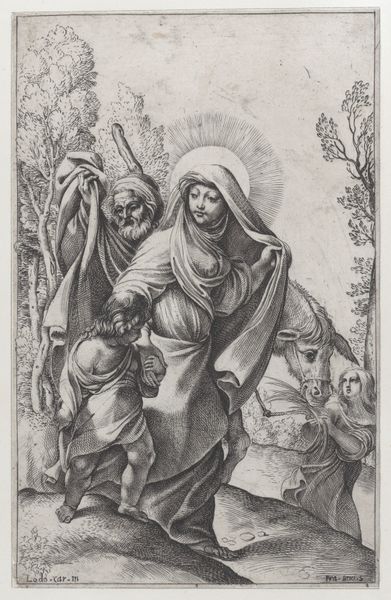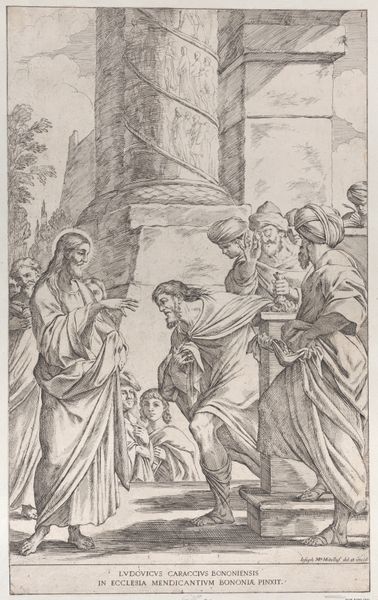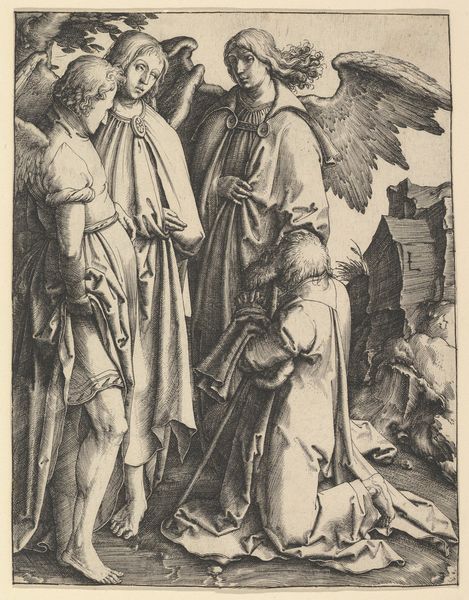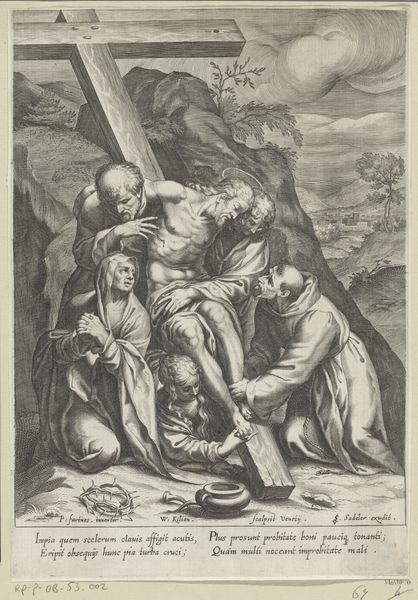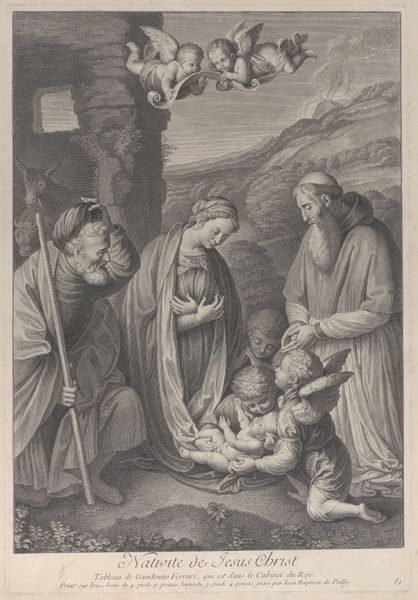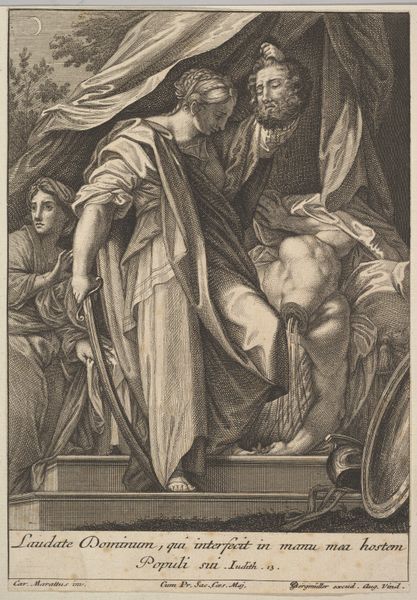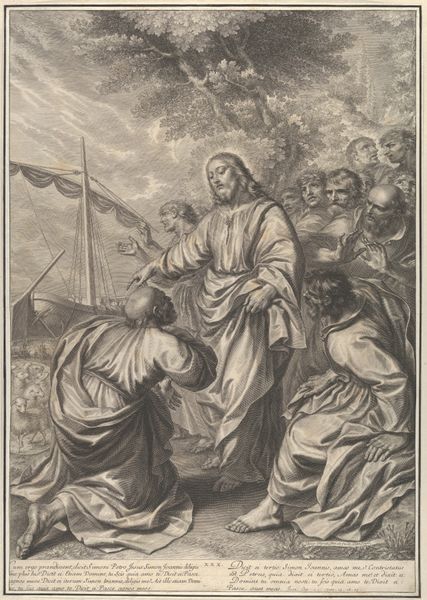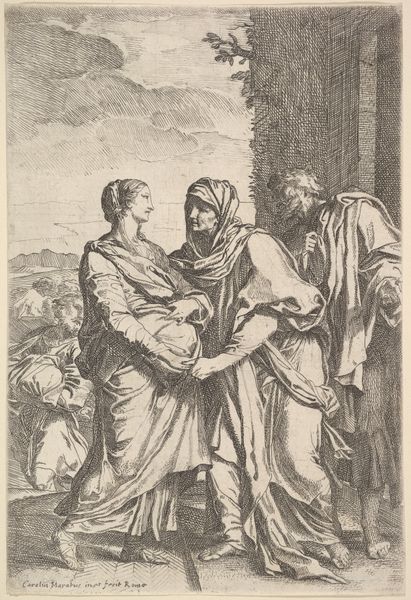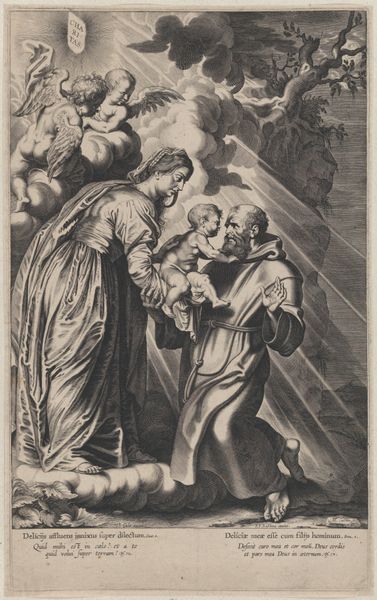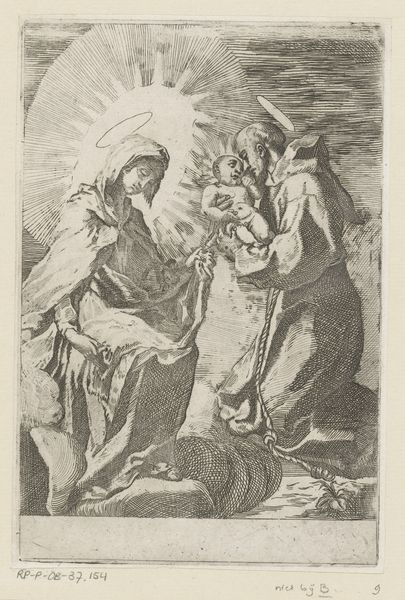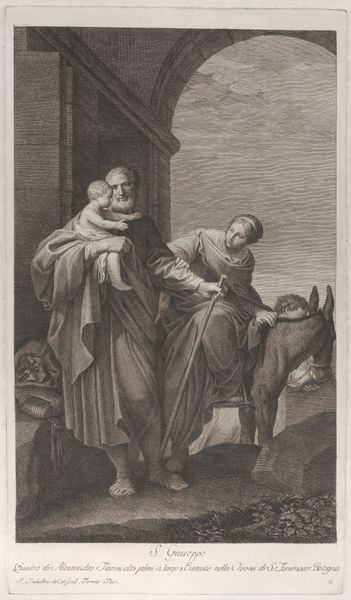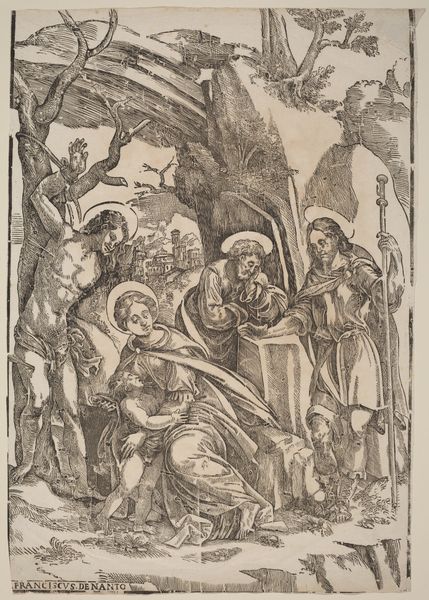
The Passage of the Jordan, from "Dalziels' Bible Gallery" 1865 - 1881
0:00
0:00
drawing, print
#
drawing
#
narrative-art
# print
#
pencil sketch
#
landscape
#
caricature
#
figuration
#
history-painting
Dimensions: Image: 8 7/16 × 6 15/16 in. (21.4 × 17.7 cm) India sheet: 10 1/2 × 8 15/16 in. (26.7 × 22.7 cm) Mount: 16 7/16 in. × 12 15/16 in. (41.8 × 32.8 cm)
Copyright: Public Domain
Editor: So, this is Frederick Richard Pickersgill's "The Passage of the Jordan," a print made sometime between 1865 and 1881. It's a monochromatic image that evokes a very solemn mood, almost mournful, given the arrangement of the figures. What do you see when you look at this piece? Curator: Immediately striking is the dynamic interplay of light and shadow meticulously rendered through the medium. Notice the artist’s strategic employment of cross-hatching to delineate form and texture. The folds of the drapery, for instance, create a visual rhythm, guiding the eye across the composition. How do you feel the texture affects your interpretation? Editor: I think the level of detail draws you in and encourages a closer look, and the landscape in the background feels intentionally bleak. What purpose might the use of line serve here? Curator: Line, here, serves a dual purpose. Firstly, it demarcates the figures, setting them in stark relief against the background. Secondly, it contributes to the overall sense of depth and spatial recession. The converging lines in the landscape create a perspectival effect, drawing the viewer into the scene. Is it not interesting how stark the lack of color is when illustrating a scene typically overflowing with symbolism? Editor: I didn't consider that, but you're absolutely right! So much is lost by not considering the line work on its own. Thank you. Curator: Indeed, close observation reveals how Pickersgill orchestrates visual elements to create meaning. It is through understanding how those formal elements come together that we can analyze and truly consider the subject matter.
Comments
No comments
Be the first to comment and join the conversation on the ultimate creative platform.

